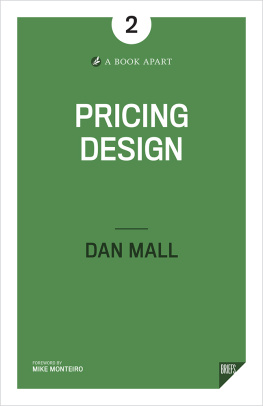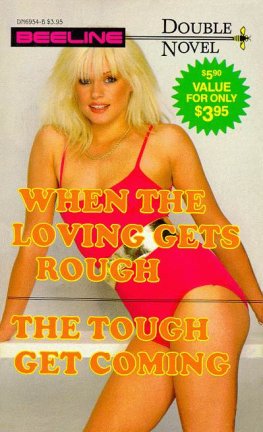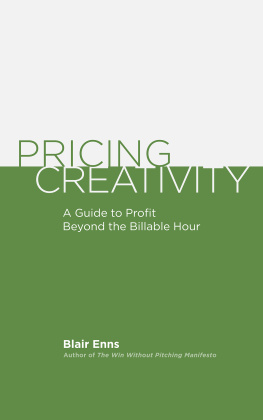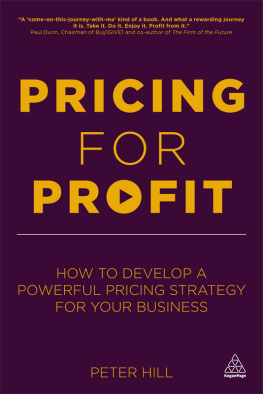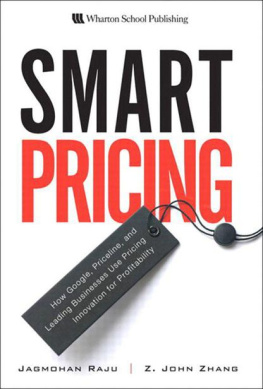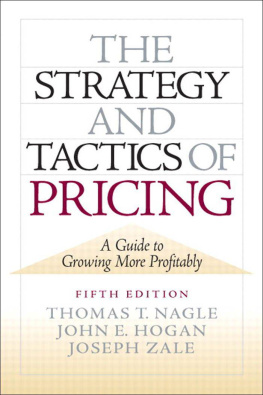Mall Dan - Pricing Design
Here you can read online Mall Dan - Pricing Design full text of the book (entire story) in english for free. Download pdf and epub, get meaning, cover and reviews about this ebook. City: New York, year: 2016, publisher: A Book appart, genre: Home and family. Description of the work, (preface) as well as reviews are available. Best literature library LitArk.com created for fans of good reading and offers a wide selection of genres:
Romance novel
Science fiction
Adventure
Detective
Science
History
Home and family
Prose
Art
Politics
Computer
Non-fiction
Religion
Business
Children
Humor
Choose a favorite category and find really read worthwhile books. Enjoy immersion in the world of imagination, feel the emotions of the characters or learn something new for yourself, make an fascinating discovery.
- Book:Pricing Design
- Author:
- Publisher:A Book appart
- Genre:
- Year:2016
- City:New York
- Rating:3 / 5
- Favourites:Add to favourites
- Your mark:
- 60
- 1
- 2
- 3
- 4
- 5
Pricing Design: summary, description and annotation
We offer to read an annotation, description, summary or preface (depends on what the author of the book "Pricing Design" wrote himself). If you haven't found the necessary information about the book — write in the comments, we will try to find it.
Pricing Design — read online for free the complete book (whole text) full work
Below is the text of the book, divided by pages. System saving the place of the last page read, allows you to conveniently read the book "Pricing Design" online for free, without having to search again every time where you left off. Put a bookmark, and you can go to the page where you finished reading at any time.
Font size:
Interval:
Bookmark:
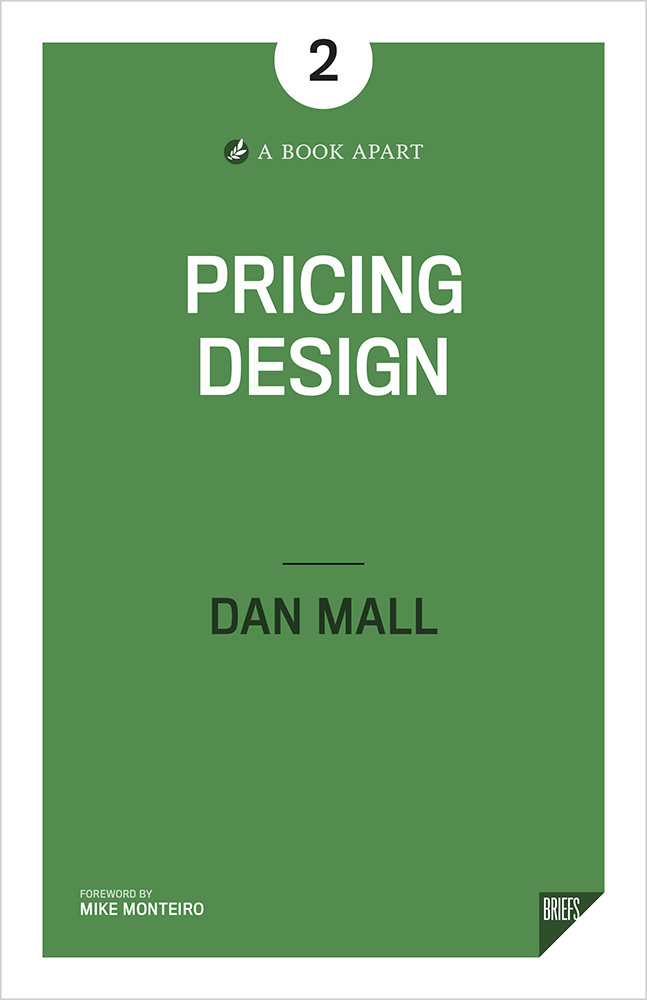
Get Ready for CSS GridLayout
RachelAndrew
Visit abookapart.com for our full list of titles.
Copyright 2016 Dan Mall
All rights reserved
Publisher: Jeffrey Zeldman
Designer: Jason Santa Maria
Executive Director: Katel LeD
Editor: Tina Lee
Technical Editor: Jason Blumer
Copyeditor: Lisa Maria Martin
Proofreader: Caren Litherland
Compositor: Rob Weychert
Ebook Producer: Ron Bilodeau
ISBN: 978-1-9375573-7-9
A Book Apart
New York, New York
http://abookapart.com
YOU ARE GOING TO make more money from this book than you spent on it.
You are going to read itprobably more than once. Youre going to highlight quite a few passages. Youre going to have your fair share of aha moments. Youre going to take the lessons to heart. And eventually, youre going to make adjustments to how you price your work based on what youll read here. Youll be more confident. Youll ask for more than youve asked for before. And if youre good at what you do, youll get it. Youll start making more money for yourself. Your business will grow. And you may even hire some people to help you with the newfound work.
You are going to make more money from this book than Dan Mall ever will.
Dan is okay with that. Because thats what Dan does for a living. He builds value. And as a designer, Dan understands that his clients will make more money from his work than he ever will, especially if he does it right. And quite honestly, thats the key to pricing work. Understanding that the people youre doing it for stand to benefit considerably if you do it right. And thats why Dan charges them according to the value of the work. Because Dan makes money for people.
And yet, designers (and I love you all) get so weird about money. We hem and haw when it comes up. Our hands get clammy. Our hearts start racing. We start sweating. We hope the client brings it up so we dont have to. Money makes us nervous. And theres absolutely no reason for this. Everyone who will ever hire you has exchanged money for services. They probably exchanged money for coffee this very morning. Its a daily occurrence. So treat it that way.
Dan gets it. And like all of us, he learned some of those lessons the hard way. And because hes a good guy, he wants to share what hes learned with you. Because he wants you to be happy, pay your bills, and have a good career.
You should listen to him.
MikeMonteiro
I WANT TO help you make more money.
Maybe this story sounds familiar. When I went out on my own, after a decade at more than a few agencies, I settled on charging $100/hour, as thats what Id heard most freelancers charged. Clients hardly pushed back. Projects went well, and I raised my ratesI got to $150/hour before customers balked. Agencies would contact me to do design comps for $150/hour, up to $1,500. (I eventually learned this was shorthand for We think this shouldnt take more than ten hours. More on this later.) By then, I could do a round of work in about three hours, which meant 1) Id make $450, and 2) Id leave a lot of money on the table.
So I tried an experiment. On the next project, when I asked, How much do you want to spend? and they said, One hundred and fifty dollars per hour, up to fifteen hundred, I countered with a flat fee of $1,000. I was happy because it was way more than $450 (I was always pretty good at estimating my hours), and my client was happy because it was still less than their budget: win-win.
It worked so well, I was soon booking five months out, and thats when I met Estherand doubled down on this whole pricing enterprise.
Esther (not her real name) came through a friends referral. She was an entrepreneur, with a great idea for a site she wanted to build from scratch. When we talked about her project, I reckoned itd be a six-month effort. Given my existing work pipeline, Id be booked for most of the year, and I didnt want to be that locked down. Worse, what if I agreed to the project, turning down others, only to have Esther bail just before we got rolling?
So I gave her the go away price. You know the one. You quote some ridiculously high number that the client wouldnt possibly pay. To sidestep the slight chance that she would, I added extra repellent. (I know I couldve politely declined, but I hadnt yet developed the muscle of saying no to good projects.)
I emailed Esther a Save the Date contract:
You agree to pay a one-time, additional, nonrefundable fee of $7,000. This ensures that the October date will be held for your project.Esther never responded.
Five days later, I received a check for $7,000 in the mail.
I learned a terrific lesson that day: people will pay for things they value, no matter how wildly out of reach you might think it is.
This is a book about making more moneyabout knowing your worth, your value. Its a book about understanding what your clients want, and doing the best work you can for them.
Pricing feels fraught, but it isnt once you put some definition around it and put it into practice a few times. Its a crucial part of business, so set your mind on getting better about it. Im here to help you figure out what price to namethe one that simultaneously makes you rich and sounds like a steal for your clients. Ill share examples of pricing gone wrong and pricing gone so, so right.
This book is for you.
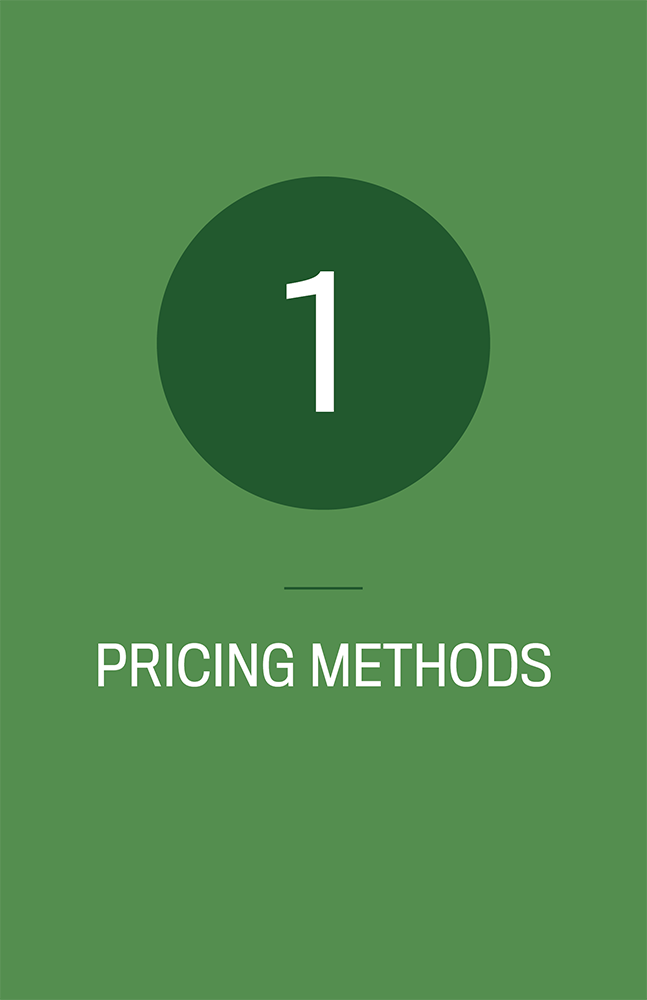
WERE LUCKY. Our profession pays well, because weve convinced our clients that design is important (and it is). But few of us price properly to capitalize on that importance. Almost every freelancer and agency owner I talk to says the same thing when I ask why they price the way they do: Its all I know, because thats how they did it at my last company.
For as much as we question and reinvent our processes and project deliverables, few of us take the time to questionto designhow we price. We tend to assume theres only one method, whether its an old way or something a friend tipped us on.
In reality, we can price projects in many ways. Lets inventory the most common and assess each of their benefits and drawbacks:
- Industry standard
- Cost-plus
- Opportunity cost
(Heads up: this book does contain some math. Should you become nauseated or light-headed, math-sick bags are located on the back of the seat in front of you. And dont worry, we all start out this way. The more you practice pricing, the easier the math part gets.)
This is also known as a market rate. As the word standard suggests, this means your rate lines up more or less with everyone elses.
The easiest way to come up with an industry-standard rate is to survey your friends rates. Say you chat with your designer pal Lindsay, who says she charges $125/hour. Then you ask Michael, who charges $90/hour. You also ask Tobias, who charges $80/hour. You average those rates to land at $98.33/hour, and you round up to $100/hour because the math is easier. Presto: your market rate.
Font size:
Interval:
Bookmark:
Similar books «Pricing Design»
Look at similar books to Pricing Design. We have selected literature similar in name and meaning in the hope of providing readers with more options to find new, interesting, not yet read works.
Discussion, reviews of the book Pricing Design and just readers' own opinions. Leave your comments, write what you think about the work, its meaning or the main characters. Specify what exactly you liked and what you didn't like, and why you think so.

